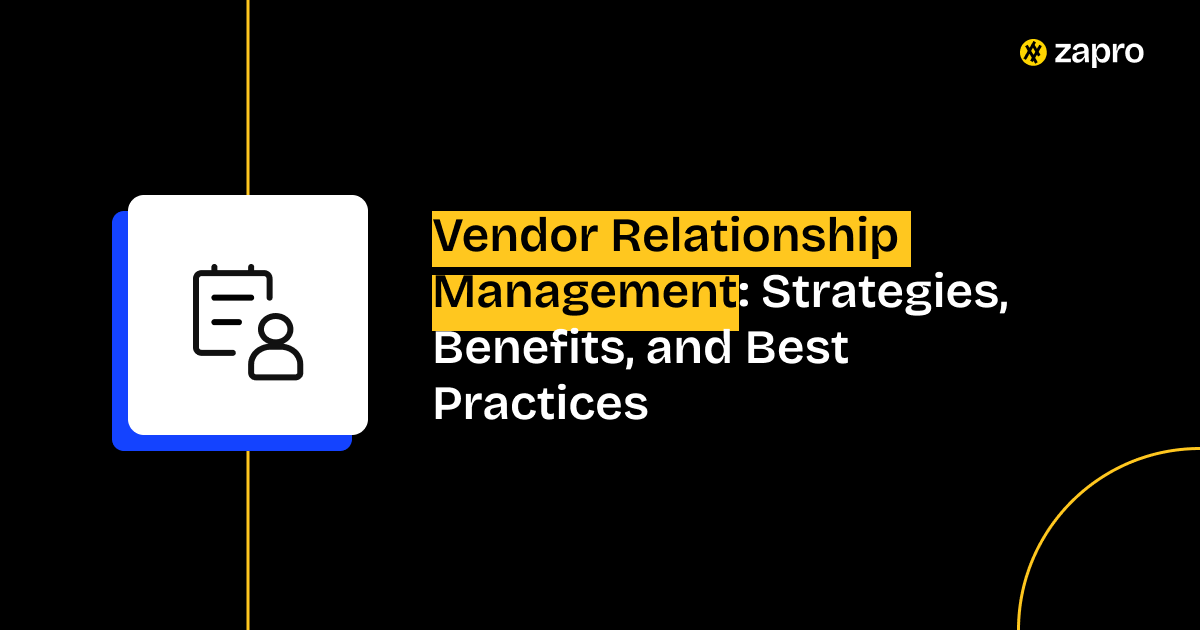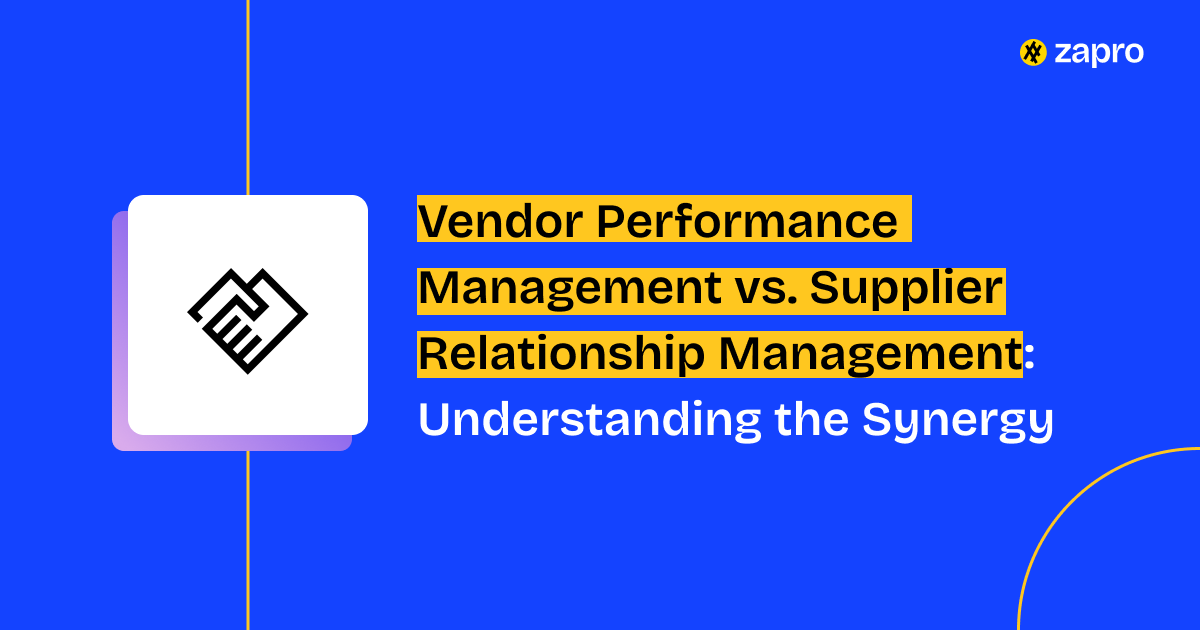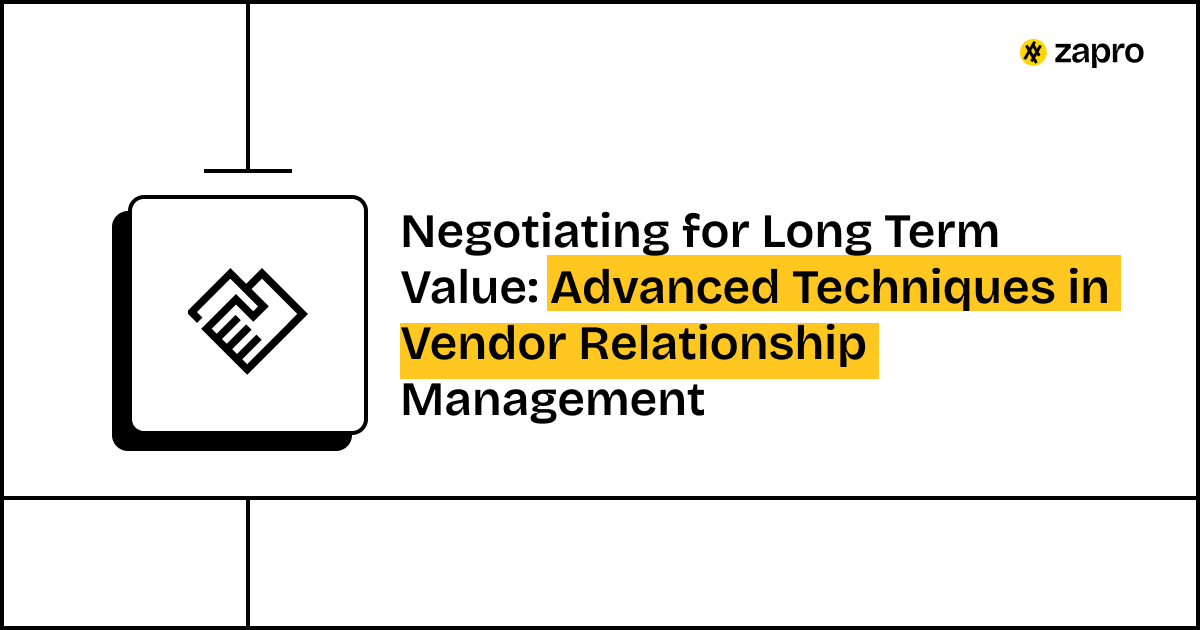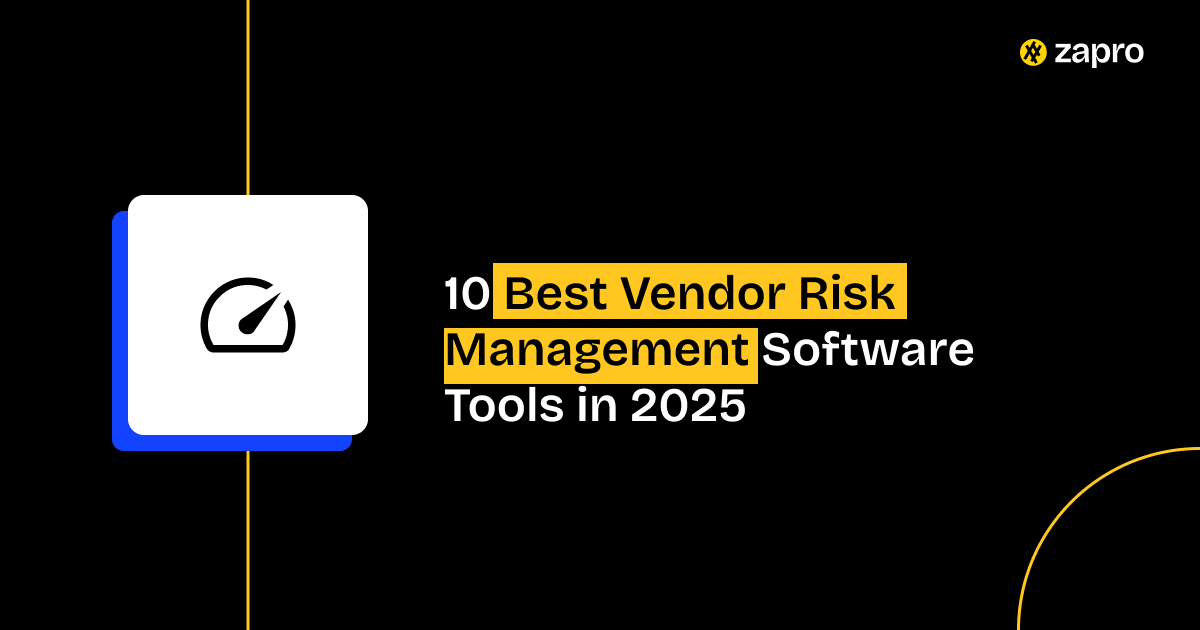You are Here: Vendor Management Software >> Vendor Relationship Management
Business success in the modern interconnected market depends on more than just internal operations because companies need to rely on vendor partnerships for essential components and services. Most businesses experience substantial financial losses together with operational inefficiencies because of inadequate vendor management, which results in delayed deliveries, poor product quality, and contractual disagreements. The current business environment reveals, through various challenges, that treating vendors as transactional partners results in substantial financial losses.
A strategic approach called vendor relationship management provides the solution to these problems. Vendor relationship management requires more than timely invoice payments because it involves creating, developing, and maximizing the value of your business partnerships with dependent companies. This guide provides an in-depth exploration into what is vendor relationship management, why it’s critical for your bottom line, and the best practices for mastering it.
What is vendor relationship management?
Vendor relationship management (VRM) refers to the strategic management of third-party supplier interactions and relations for value maximization, risk minimization, and long-term collaboration.
While transactional procurements management entail purchasing goods or services at the optimal cost, VRM adopts a broader view, mutually advantageous collaboration so that the buyer and the vendor can thrive.
VRM, at its essence, entails:
- Vendor’s strength, weakness, and business objectives familiarity.
- Ensuring alignment with your organization’s goals, standards, and compliance requirements.
- Building trust by communicating consistently, honestly, and fairly.
- Utilizing performance information to fuel ongoing innovation and improvement.
This strategy is particularly essential in modern supply chains, where there are disruptions, regulatory requirements, and competition, which necessitate collaboration between companies and suppliers.
VRM vs Traditional Vendor Management: What’s the difference?
| Aspect | Traditional Vendor Management | Vendor Relationship Management (VRM) |
| Focus | Transactional (cost, delivery) | Strategic (long-term value, partnership) |
| Goal | Minimize cost, control risk | Optimize value, drive innovation |
| Relationship | Buyer-supplier | Collaborative partner |
| Communication | Ad-hoc, reactive | Proactive, ongoing |
| Metrics | On-time delivery, price | Performance, innovation, risk, quality |
The terms Vendor and Supplier are closely related and are interchangeable, and therefore, it is important to comprehend their usage. While Vendor refers to a goods or services provider, the term Supplier refers to a long-term supplier of goods or services. While vendors end in a transactional way, suppliers become an integral part of the company. The essence of VRM, however, is to elevate all critical vendor connections to a strategic partnership level. This is sometimes called vendor-client relationship management.
Vendor Relationship Management vs CRM: What is the difference?
Customer relationship management (CRM) focuses on nurturing relationships with customers to drive sales, retention, and loyalty. VRM applies similar principles, but flips the perspective toward the supplier side.
Here’s how they compare:
| Element | CRM (Customer Relationship Management) | VRM (Vendor Relationship Management) |
| Target relationship | Customers | Vendors / suppliers |
| Goal | Increase revenue, loyalty, and customer lifetime value. | Improve vendor performance, strengthen collaboration, and maximize procurement ROI. |
| Data focus | Sales pipeline, customer interactions, support history. | Procurement data, performance metrics, risk indicators, compliance records. |
| Technology tools | CRM platforms like Salesforce, HubSpot. | VRM platforms or modules in procurement suites like Ivalua, SAP Ariba, or Zapro. |
| Success measurement | Customer retention rate, upsell revenue, satisfaction score. | Vendor performance scorecard, joint innovation projects, risk reduction. |
A helpful way to think about it: if CRM is about ensuring customers come back, VRM is about ensuring vendors stay committed and keep delivering value.
Why Vendor Relationship Management Matters
Looking to grow abundantly in 2025? Then, mastering Vendor Relationship Management could be your key to grand success. It is not just an everyday task but a strategic imperative. Here is why:
1. Cost Optimization
Poor vendor relationships lead to inflated costs. Effective VRM allows you to negotiate better terms, leverage bulk discounts, and avoid costly disputes. It’s one of the most direct ways to improve your bottom line.
2. Risk Mitigation
Every vendor relationship carries a level of risk—whether it’s supply chain disruption, data security breaches, or a vendor going out of business. VRM provides a structured framework for identifying, assessing, and mitigating these risks before they become a crisis.
3. Quality Assurance
By building collaborative partnerships, you can work with vendors to ensure consistent quality in the products and services you receive. This helps you avoid costly rework and maintain a high standard for your own customers.
4. Innovation Partnership
Your vendors aren’t just order-takers; they’re experts in their fields. By involving them in your strategic planning, you can leverage their knowledge to find new solutions, improve processes, and gain a competitive edge. This is a fundamental principle of customer relationship management vendors, which applies just as much to the vendor-client dynamic.
5. Compliance and Governance
In an increasingly regulated world, compliance is non-negotiable. VRM provides the tools and processes to ensure your vendors adhere to legal, ethical, and industry standards, protecting your business from legal and reputational damage.
Learn about Vendor Relationship Management for Crisis and Disruption Resilience.
Key Components of Effective Vendor Relationship Management
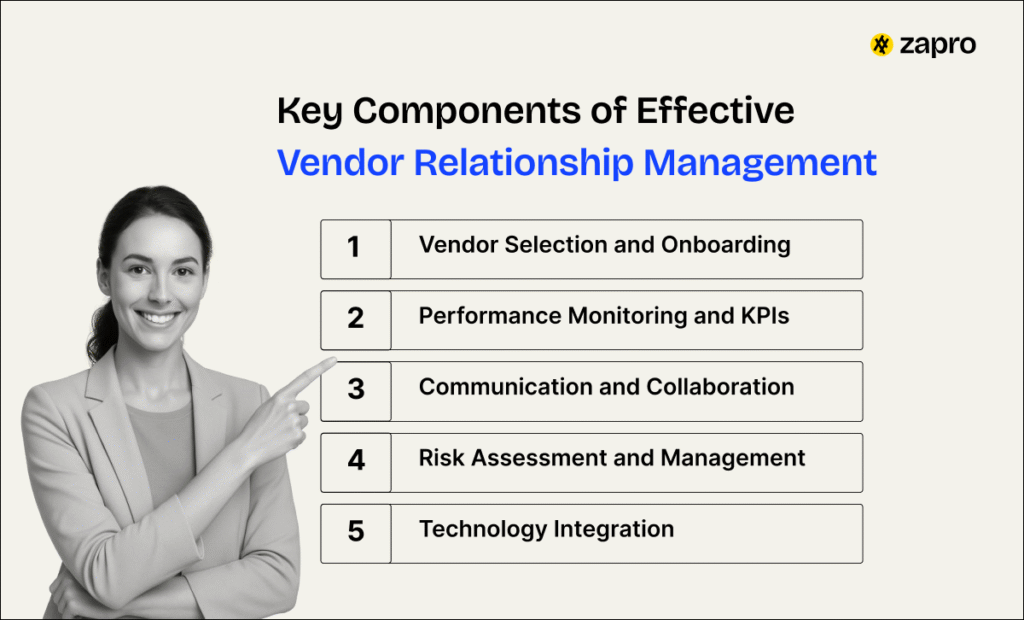
A robust vendor management relationship isn’t built on good intentions; it’s built on a structured process. Here are the core components:
- Vendor Selection and Onboarding: The relationship starts here. It involves thorough due diligence, assessing a vendor’s financial stability, track record, and capabilities. Your contract negotiation should establish clear expectations for performance, communication, and risk.
- Performance Monitoring and KPIs: You can’t manage what you don’t measure. Establish a set of essential metrics (KPIs) to track vendor performance, such as on-time delivery, quality ratings, and response times. Regular reviews ensure both parties stay aligned and address issues proactively.
- Communication and Collaboration: Move beyond transactional emails. Implement a system for open, ongoing communication. This could involve regular meetings, shared dashboards, and joint problem-solving sessions to build a true partnership.
- Risk Assessment and Management: Continuously assess potential risks, from a vendor’s cybersecurity practices to their financial health. Have a clear mitigation strategy in place for each identified risk to ensure business continuity.
- Technology Integration: Modern vendor management relies on technology. A dedicated platform centralizes data, automates tasks, and provides real-time visibility, making the entire process more efficient and data-driven.
Key Challenges In Vendor Relationship Management
Even the best-planned VRM strategy has its own share of challenges.
Most organizations do not comprehend the intricacy of having healthy vendor relations, particularly if there are several stakeholders, geographies, and regulatory structures to consider.
Miscommunication and expectation gaps
One of the most prevalent problems involves mismatched buyer and vendor expectations. This can occur as a result of unclear contracts, inadequate documentation, or inconstant contact points.
For instance, if a vendor defines “fast delivery” as 48 hours but your procurement department anticipates 24, the subsequent friction can pull the partnership in the wrong direction.
So, structured, periodic communication is essential to avoid such discrepancies.
Performance inconsistency
Vendors may do well at first but disappoint in the long term. Inconsistency in quality, lateness, or lower responsiveness can erode trust. Inconsistency of this type may result from difficulties in the vendor’s own operation, seasonal variation, or shifting priorities.
Without stringent monitoring and feedback controls, drift in performance tends to be unchecked until customers suffer.
Compliance and legal risks
Your suppliers are an extension of you. Their non-compliance (with labor laws, data protection, environment regulations, and so on) can land you in trouble in court and in the newspapers. The risk is highest in highly regulated sectors, say, in drugs or banking, where one misstep on the part of a supplier can precipitate expensive audits or loss of license.
Data transparency issues
Inconsistent or incomplete data exchange between you and your vendors can hamper decision-making. If your team does not have real-time insight into vendor capacity, shipment status, or quality measurements, you have less ability to plan demand or solve problems in advance.
Data silos also create difficulties in making unbiased performance evaluations.
Over-dependence on a single vendor
Dependence on a single vendor to supply you with essential goods or services can be a single point of failure in your supply chain. If such a vendor encounters operational, financial, or geopolitical issues, your business could be compromised.
Diversifying the base of suppliers and developing contingency plans can help to build resilience.
Cultural and geographical differences
Working across international suppliers, time zones and cultural disparities can lead to confusion or delays. Even something as small as differences in holiday schedules can have an impact on project timelines, and disparities in negotiating or decision-making can hamper collaboration.

58% of procurement leaders said they already are implementing, or plan to implement AI in the next 12 months and Half of procurement contract management will be AI-enabled by 2027
5 solid vendor relationship management strategies you should not forget
Strong vendor relationships don’t happen by accident. They require a structured approach that balances business needs with the vendor’s capabilities and interests.
Strong vendor relationships don’t happen by accident. They require a structured approach that balances business needs with the vendor’s capabilities and interests.
1. Forming mutually beneficial relationships
Think past the transactional. The ideal vendor relations are collaborations in which both parties recognize value in mutually supporting one another’s growth. That may include granting longer contracts in exchange for favorable pricing, or insights on market trends that allow them to innovate in ways they can help you.
Keep in mind that mutual advantage creates loyalty, which pays dividends when supply chains get strained.
2. Transparent communication and collaboration
Transparency is the cornerstone of trust. Maintain regular check-ins, share performance data openly, and discuss potential challenges early.
You can use collaborative tools like shared dashboards or project management platforms. They will make updates seamless and reduce the back-and-forth confusion.
3. Setting clear expectations
Every partnership needs a clear baseline for what “good” looks like.
You should define quality standards, delivery timelines, service levels, and reporting requirements in writing.
Avoid vague language in contracts; measurable targets make performance easier to track and disputes easier to resolve.
4. Periodic performance appraisal
Review vendor performance on a set schedule, not just when issues arise.
Quarterly or semi-annual reviews using objective metrics (KPIs, scorecards) help spot trends before they become problems. A balanced approach involves recognizing good performance as well as addressing gaps. It would keep the vendors motivated in the longer run.
5. Negotiation and conflict resolution
Even in strong relationships, disagreements happen. Approach negotiations as problem-solving rather than point-scoring. Using structured conflict resolution methods, like mediation or joint improvement plans, helps prevent small issues from escalating into costly disputes.
Vendor Relationship Management Best Practices
To move your VRM from a basic function to a strategic asset, adopt these best practices:
Strategic Alignment
Ensure that your vendor’s goals are aligned with your business objectives. A vendor’s success should be linked to yours, fostering a shared commitment to long-term value.
Regular Performance Reviews
Don’t just check in when something goes wrong. Conduct structured, formal performance reviews quarterly or annually to celebrate successes and address areas for improvement.
Relationship Building
Encourage your team to build trust and rapport with their vendor counterparts. Moving beyond a purely transactional relationship can lead to greater flexibility, better problem-solving, and a more positive experience for everyone involved.
Data-Driven Decision Making
Use analytics to inform your vendor relationship management best practices. Track KPIs, analyze spend data, and use these insights to make objective, informed decisions about which relationships to invest in.
Continuous Improvement
VRM is an iterative process. Regularly review your own processes and seek feedback from your vendors to identify opportunities for mutual improvement.
Improve your supplier relationship in just a click!

How to Monitor Vendor Performance Effectively
The real test of a vendor relationship comes after onboarding. Effective performance monitoring ensures both parties keep delivering value.
KPIs to measure
Relevant KPIs include:
- On-time delivery rate — proportion of deliveries within or before specified dates.
- Quality compliance rate — percentage of orders meeting quality standards without rework.
- Responsiveness — average time to acknowledge and resolve questions.
- Cost adherence — ability to stick to agreed pricing without hidden surcharges.
Vendor scorecards
Scorecards aggregate these KPIs in a visual, easy-to-read report.
They enable side-by-side comparisons of vendors, indicate areas of opportunities for improvement, and become the basis for performance evaluations.
Feedback loops
Always try to foster two-way communication. Suppliers must be able to offer recommendations or raise issues without fear of retaliation.
Not only does this reinforce trust, but in addition, it encourages innovation, suppliers frequently have ground-level insights into market trends or process refinement.
Using automation and technology to obtain insights
VRM solutions and procurement platforms available today can be applied in automating reporting of KPI, performance alerts for issues, and predictive reporting.
AI-controlled systems, for example, can notify potential hold-ups before they happen, or offer other providers in situations of risks. Incorporation of such solutions in the ERP system offers decision-makers real-time, dependable information at all times.
How to build long-term, strategic vendor partnerships
Short-term cost savings might win quarterly reports, but long-term, strategic partnerships are where the real procurement ROI is found. These relationships are built on trust, shared goals, and adaptability.
- Contracts with flexibility
Rigid contracts may protect you in the short run, but they can limit adaptability when market conditions change. Building in clauses for volume adjustments, pricing reviews, or scope modifications allows both sides to pivot without reopening the entire agreement. This flexibility can be the difference between surviving a disruption and losing a critical supply line.
| Pro-tip: Use “win-win clauses” in contracts Instead of only penalty-based clauses, include incentives for exceeding performance targets. This shifts the dynamic from enforcement to motivation, making vendors more willing to go the extra mile. |
- Long-term value over short-term savings
Chasing the lowest bid often comes at the expense of reliability, quality, and innovation. Instead, evaluate vendors on their potential to add sustained value — whether through better service, process improvements, or joint cost-saving initiatives over time. The vendor that’s slightly more expensive today may be the one that helps you avoid million-dollar losses tomorrow.
- Shared risk and innovation
Partnerships thrive when both parties have skin in the game. Shared risk models — such as co-investing in new technology, jointly managing inventory, or collaborating on R&D — foster mutual accountability. This also creates a platform for innovation, where vendors feel empowered to bring forward ideas that benefit both businesses.
- Joint business planning
One of the most effective but underused approaches in VRM is joint business planning. This means creating annual or quarterly plans with vendors that align your forecasts, marketing initiatives, and capacity planning. It ensures both sides are working toward common targets, not just transactional obligations.
| Point to noteDon’t let contact points get siloed: If all communication goes through one person on each side, relationship risk increases when either leaves the company. Maintain multiple points of connection, operational, technical, and strategic, to ensure continuity. |
- Regular relationship health checks
Performance reviews focus on metrics, but relationship health checks focus on trust, collaboration quality, and alignment. These can be annual sessions separate from KPI discussions, where both parties can openly share concerns and expectations without the pressure of contractual enforcement.
- Knowledge and resource sharing
Offering vendors training, market intelligence, or access to your expertise can strengthen the relationship and improve their performance for you. Similarly, learning from vendors’ insights into their sector can help you anticipate industry shifts earlier.
VRM Technology and Tools
The digital transformation has revolutionized vendor relationship management. The days of managing vendors with spreadsheets and email chains are over. Modern VRM platforms provide the technology to automate and optimize every stage of the vendor lifecycle.
Essential VRM Features:
- Vendor Database and Profiling: A single, centralized repository for all vendor information, including contact details, contracts, certifications, and performance history.
- Performance Dashboards and Analytics: Real-time dashboards with key metrics on vendor performance, spend analysis, and risk scores.
- Communication and Collaboration Tools: Integrated portals for seamless communication with vendors.
- Risk Assessment and Monitoring: Automated tools for screening and continuous monitoring of vendor risk factors.
- Contract Management Integration: Linking vendor performance to contract terms and renewal dates.
- Compliance Tracking and Reporting: Ensuring vendors meet all regulatory and internal compliance standards.
The Future of Vendor Relationship Management
The future of VRM is exciting, driven by new technologies that will make relationships even smarter and more strategic.
Emerging Technologies
AI and machine learning will play a major role, helping businesses automate vendor selection and predict performance issues before they happen.
Predictive Analytics
Imagine a system that can analyze historical data to anticipate a vendor’s risk profile or a potential supply chain disruption. Predictive analytics will make this a reality.
Sustainability and ESG
Companies are increasingly prioritizing environmental, social, and governance (ESG) factors in their vendor selection. Future VRM platforms will incorporate tools to track and report on these metrics, reflecting a broader commitment to ethical business practices.
Digital-First Relationships
The shift to virtual collaboration is permanent. VRM platforms will continue to evolve, offering more sophisticated tools for remote communication, performance reviews, and partnership building.
Blockchain Applications
Blockchain technology could bring unprecedented transparency to vendor networks, providing an immutable record of transactions and certifications, building greater trust.
Turning vendor relationships into competitive advantage with Zapro
Strong vendor relations aren’t built in spreadsheets or fragmented email threads, they’re built via constant communication, clear visibility, and trust.
That can get tricky to handle across dozens (or hundreds) of vendors, though, if your tools just handle part of the process.
That’s precisely where Zapro steps in.
Zapro is a vendor management software and then some; it’s the CRM of your suppliers. Where Salesforce transformed how companies maintain customer relationships, Zapro transforms how you interact, monitor, and grow in sync with your suppliers.
Rather than juggling 15+ isolated tools for procurement, onboarding, risk, compliance, and performance, Zapro brings all of it into one. It records not only transactions such as purchase orders and invoices, but the context around transactions — the calls, emails, notes, and feedback that create genuine partnerships.
With Zapro, you can:
- View the complete history of all of your vendor relationships in one glance.
- Monitor KPIs and performance trends using vendor scorecards and analytics.
- Get new suppliers up and running in half the time, within regulations.
- Substitute third-party risk management solutions with in-built monitoring.
- Make sure new hires can grasp vendor relationships without missing a beat.
Quite simply, Zapro gives procurement and vendor management teams the visibility, structure, and insight they need to make vendor relationships a genuine competitive strength. After all, if your vendors succeed, you succeed, and Zapro helps you get there sooner.
Conclusion and Next Steps
Vendor relationship management is far more than a simple operational task—it’s a strategic driver of efficiency, cost control, and innovation. The era of treating vendors as disposable is over. The businesses that will succeed in 2025 and beyond are those that invest in building strong, collaborative, and data-driven partnerships.
Ready to transform your vendor relationships into a strategic advantage?
Start by assessing your current process.
Are you using spreadsheets to manage vendor relationships? Are you manually tracking every contract? If so, it’s time to explore a better way.
Take Action: Discover how Zapro’s vendor management solution can automate your processes, provide real-time visibility, and help you build smarter, more profitable vendor partnerships.

Transform Your Vendor Management with Zapro
Onboard faster. See clearer. Manage smarter.
Frequently Asked Questions
1. Is vendor relationship management the same as vendor risk management?
No, they are related but distinct. Vendor Relationship Management is a broad, strategic discipline focused on nurturing and optimizing vendor relationships for mutual value. Vendor Risk Management is a specific component of VRM, focused solely on identifying, assessing, and mitigating the risks associated with vendors.
2. Can you automate vendor relationship management?
Yes, absolutely. Modern (VRM) Vendor Relationship Management software can automate a wide range of tasks, including vendor onboarding, contract tracking, performance monitoring, and compliance reporting. This automation reduces manual effort and provides the data needed for strategic decision-making.
3. Is vendor relationship management only for large enterprises?
No, vendor relationship management is crucial for businesses of all sizes. Even a small company with a handful of key vendors can benefit from a structured approach to building partnerships, ensuring quality, and mitigating risk. Affordable, scalable software is now available to help SMBs with vendor relations management.
4. What features should I look for in vendor relationship management software?
Look for a platform that includes a centralized vendor database, performance dashboards, communication and collaboration tools, automated risk assessment, and integration with your existing systems. These features are essential for a complete vendor management relationship solution.
5. Can Zapro automate vendor relationship management?
Yes, Zapro is designed to automate and simplify vendor relationship management. Its platform helps you centralize vendor data, monitor performance with real-time dashboards, and streamline communication, enabling you to build stronger, more strategic partnerships while reducing manual tasks and risks.
Don’t miss our weekly updates
We’ll email you 1-3 times per week—and never share your information.

 Healthcare
Healthcare Financial Services
Financial Services Technology
Technology Venture Capitalist
Venture Capitalist Chief Procurement Officer
Chief Procurement Officer Chief Financial Officer
Chief Financial Officer
